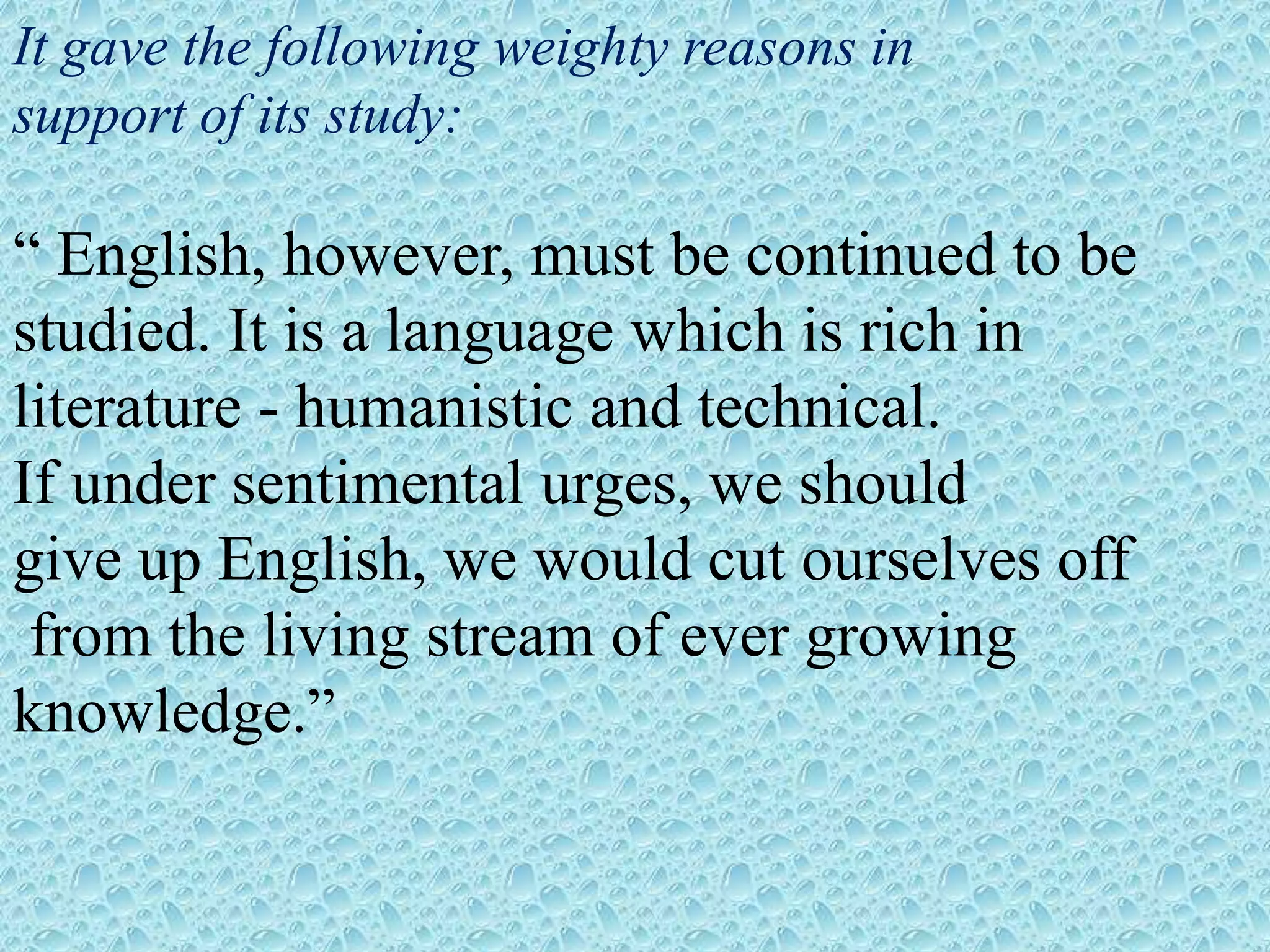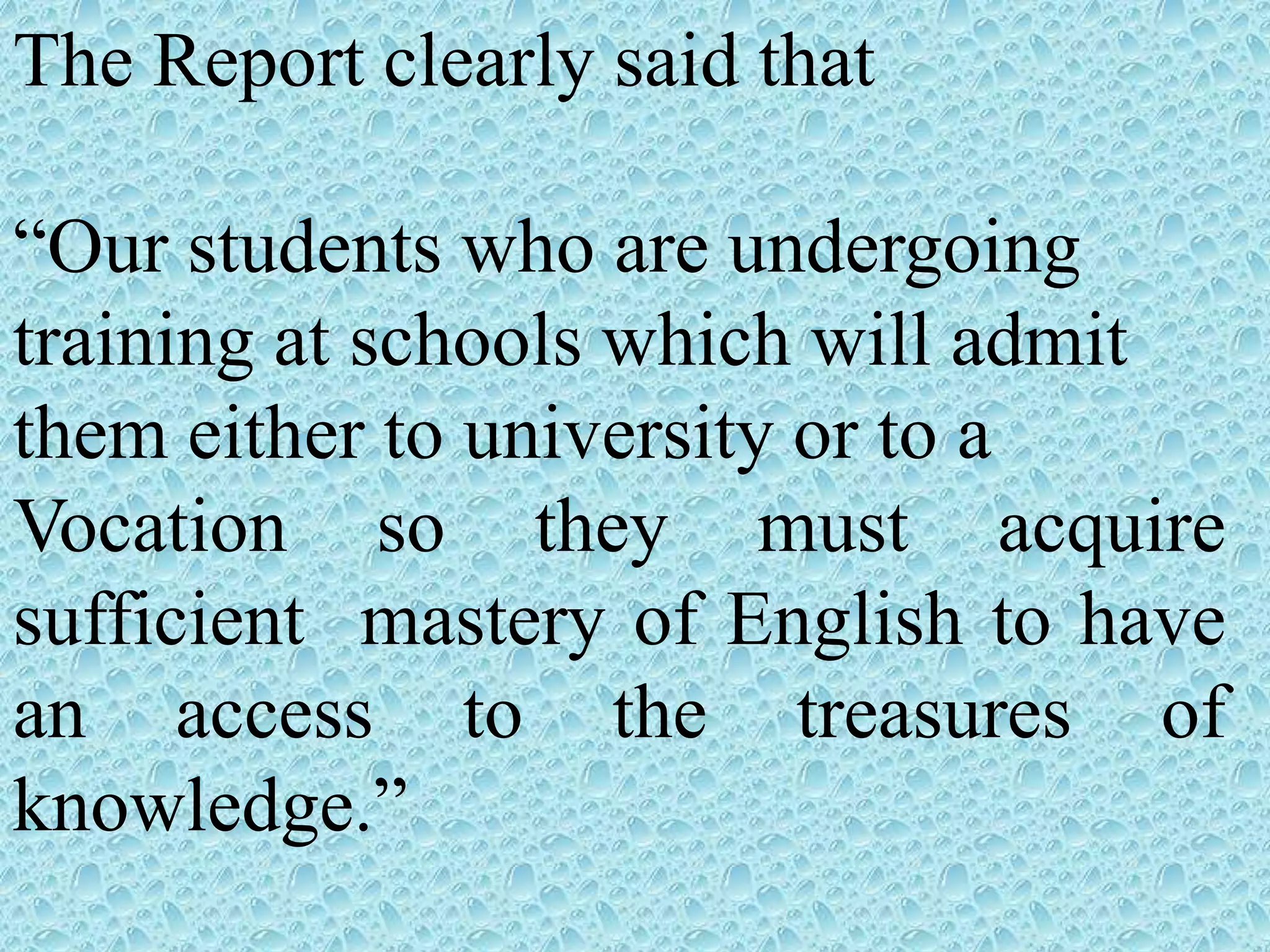The document discusses the evolving role of English in the Indian school curriculum post-independence, highlighting various commissions' reports that emphasized its importance for educational access and knowledge. The University Education Commission of 1948, along with later commissions, advocated for English to be taught as a second or third language alongside regional languages, ultimately underscoring its value in higher education and as a significant medium of instruction. These recommendations aimed to maintain English's status while accommodating the linguistic diversity of India through a structured three-language formula.















